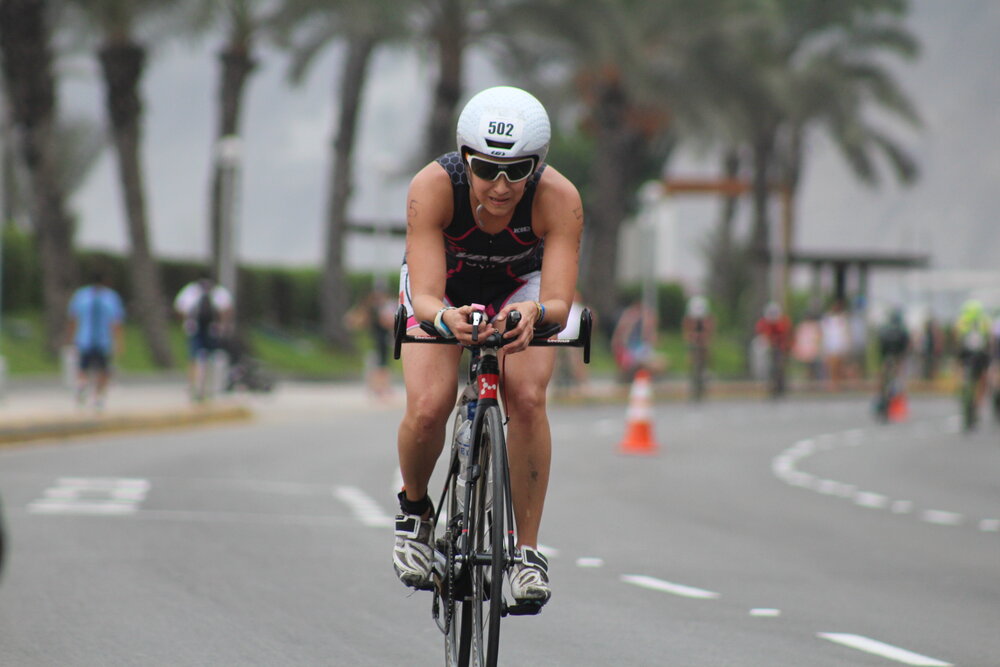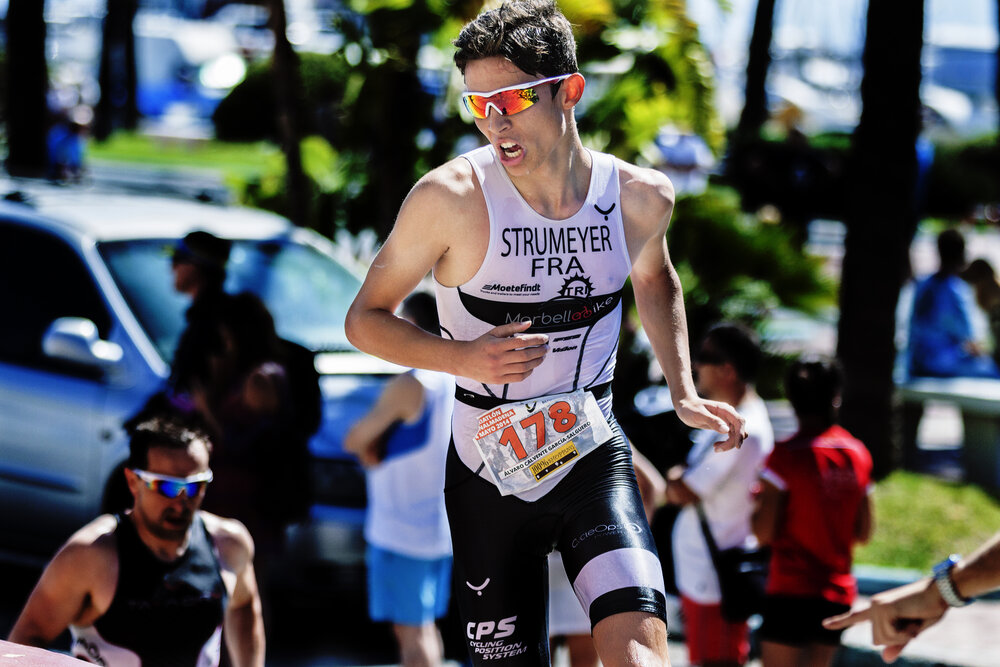Triathlon is a multi-discipline endurance sport that consists of swimming, cycling and running in one continuous race. Each discipline is completed sequentially and includes timed transitions between the three events. The origin of the sport dates back to France in the 1920s, when an event called “Les Trois Sports” was first published in a French newspaper, featuring a 3-kilometer run, a 12-kilometer bike, and a swim across the Marne Channel. It continued to grow in popularity over the next few decades and to this day it’s still held in its original location.
The modern triathlon traces its roots back to San Diego, California in the late 1960s. Organized by members of the San Diego Track Club, early triathlons were non-competitive training exercises held on summer evenings to break up the monotony of training for marathons and 10Ks. One athlete who raced at the first Mission Bay Triathlon, John Collins, a U.S. Naval Officer, was very influential in expanding the sport to wider athletes, locations and audiences. He took the concept to Hawaii and used it to combine three of Oahu’s hardest endurance events, the Waikiki Rough Water Swim, the Around-Oahu Bike Ride and the Honolulu Marathon, into one race – the Ironman. Only 12 men completed the first Ironman race held in January 1978, with the first woman joining in 1979 and an explosion of popularity in 1980 after ABC began broadcasting the event live. Dramatic footage of Julie Moss crawling on her hands and knees to a second-place finish captivated audiences around the world, further cementing triathlon as a major world sport.

Swimming is the first discipline and it can take place in a swimming pool or open water, such as a lake, river or ocean. Each body of water has its own set of advantages and challenges.
Race Distances
- Sprint: 750 meters or 0.5 miles
- Olympic: 1500 meters or 0.93 miles
- Half-Ironman: 1900 meters or 1.2 miles
- Ironman: 3800 meters or 2.4 miles
Essential Gear
- Tri-suit
- Swim Cap
- Wetsuit (depending on race temperature)
- Goggles
- Optional gear (ear plugs, body lubricant)

Cycling is the second discipline and it can be completed on any type of bicycle, but most athletes use triathlon-specific bikes that are more aerodynamic.
Race Distances
- Sprint: 20km or 12.4 miles
- Olympic: 40km or 24.8 miles
- Half-Ironman: 90km or 56 miles
- Ironman: 180km or 112 miles
Essential Gear
- Tri-suit or bike shirt/shorts
- Bike
- Helmet
- Bike shoes
- Water bottles
- Nutrition
- Flat kit
- Optional gear (bike gloves, sunglasses, bike computer)

Running is the last discipline and it can take place on or off-road, such as parks and trails. Aid stations along the course typically offer water, electrolyte drinks and snacks.
Race Distances
- Sprint: 5km or 3.1 miles
- Olympic: 10km or 6.2 miles
- Half-Ironman: 21.09 km or 13.2 miles
- Ironman: 42.195 km or 26.2 miles
Essential Gear
- Tri-suit or run shirt/shorts
- Running shoes
- Running socks
- Race bib holder
- Optional gear (hat or visor, sunglasses, nutrition)
How a Triathlon Works

Transitions
The change from one sport to the other is called a transition. The first transition is called T1 and it’s between the swim and bike segments of the race. During T1 athletes change out of their swim gear (wetsuit, swim cap, goggles) and into their bike gear (helmet, bike shoes, etc.). The second transition is called T2 and it’s between the bike and run segments of the race. During T2, athletes change out of their bike gear and into their run gear (running shoes, socks, hat, etc.). Usually T1 and T2 are located in the same area, so all of the athlete’s gear is in the same location. The time spent in each transition area contributes to the overall finishing time.
Aid Stations

Race Structure
Pre Race
Pre race procedures vary depending on the race destination, format, length and size. Before the race, you’ll need to check in and pick up your race packet, which usually includes your race number, bib and stickers (used by Race Officials, photographers, volunteers and race staff to identify you during the race), swim cap, timing chip, gear bag(s) and race instructions/rules. Some events allow you to check in a few days before the race, while others let you do it all on race day.
After receiving your race packet, you’ll attach your race number to your helmet and bike using the stickers provided. The race number is usually written by the event staff on your swim cap and you’ll receive a bib that you’ll wear during the run, either attached with close-pins to your shirt or attached on a running belt. The next step is to walk your bike and gear over to the transition area, which many athletes call “racking the bike,” where you place the bike at your designated spot and setup your gear next to or directly behind the bike tire. This is your designated spot that you will return to between the swim-bike and bike-run. Here you’ll store your bike shoes, helmet, running shoes, socks, water, at towel etc. The last step is to get your body marking done, which is usually near the entrance to the transition area. Event staff will mark both of your arms with your race number and your calf with your age.
One you’ve checked in and setup your transition area, it’s time to relax before the race starts. Use this time to study the course and rules, as well as your individual nutrition, hydration and race strategy.
Questions to think about include:
- 1. Your overall race goal.
- 2. The equipment you plan to use and the equipment you’ll bring just in case you need it.
- 3. Your start position for the swim (varies depending on comfort and experience level).
- 4. Visualize and walk-through the steps for each transition (example T1: take off goggles/cap, remove wetsuit, put on bike shoes/helmet, walk bike to mount line)
- 5. Pace, cadence and heart rate goals for the bike segment.
- 6. Nutrition and hydration strategy for the bike segment, and how to change a tire in case of a flat.
- 7. Pace and heart rate goals for the run segment.
- 8. Nutrition and hydration strategy for the run segment, and how to utilize the aide stations most effectively.
Race
- 1. Typically the race starts when athletes run over a timing mat and into the water. However, some races may have you treading water until the horn goes off, which signals the start of the race. There are no rules specifying a required swim stroke, so you are free to use any stroke you’d like, but most people will swim freestyle or front crawl. The course is identified by large buoys and race organizers will tell you in advance, which side of the buoy to follow the course. Swim to each buoy until you finish.
- 2. After finishing the swim course, athletes proceed to T1 (Transition 1), where they change into their bike gear and walk their bike to the bike mount line. Your helmet must be strapped and you cannot start riding until you pass the mount line. The time spent between the swim exit and bike start line contributes to your overall race time and it’s called the T1 time.
- 3. The bike course begins once athletes walk their bike to the “bike out” exit and across the bike mount line. It’s important to follow race rules or you may be disqualified. These rules typically state that littering, drafting and outside assistance is prohibited.
- 4. After finishing the bike segment, athletes will return to the transition area T2 (Transition 2) by following the “bike in” entrance. Here they change out of their bike gear and into their run gear, before proceeding to the “run out” entrance.
- 5. The finish line chute is packed with spectators and each experience is a moment you’ll never forget.